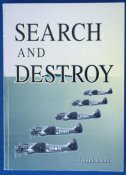The role of the Beaufighters against the Japanese Forces set to invade Australia, and the young men who held the Japanese at bay.
No. 31 Squadron was formed at the Forest Hill base near Wagga Wagga, NSW, on 14 August 1942. After equipping with the Bristol Beaufighter and being brought up to strength, it moved to Batchelor in the Northern Territory in October and then to its new home at Coomalie Creek, south of Darwin in November. The squadron’s first combat operation took place on 17 November 1942.
Over the next two years, No. 31 Squadron flew ground attack sorties against the Japanese in Timor and the Netherlands East Indies, as well as anti-shipping patrols and convoy protection missions. One of its greatest successes was the raid on Penfoei on 2 December 1942, when the Beaufighters caught 40 Japanese aircraft on the ground. Without loss to themselves, they destroyed eighteen and damaged many more. In November 1944, the squadron deployed to Noemfoor, from where it flew two convoy protection missions before moving again, to Morotai, in late December to attack Japanese positions in the Celebes and Halmahera Islands.
Setting up on Tarakan in May 1945, No. 31 Squadron carried out strikes in support of the Australian landings in Borneo and Brunei in June and the operations that followed. After the Japanese surrendered on 15 August, the squadron dropped leaflets over the Halmaheras to inform the garrison of those islands that the war was over.
No. 31 Squadron returned to Australia in December 1945 and disbanded at RAAF base Williamtown on 9 July 1946. SCARCE 141214
